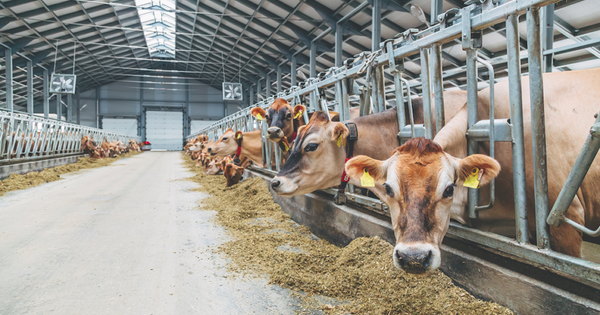Every year, wildfires burn millions of acres across the United States. Although most animals are not directly threatened by fire, the smoke, particulates, and byproducts (such as ash) produced by wildfires may have a negative impact on animal health, welfare, and production.
The increased frequency and size of wildfires in the United States over the last several decades has a wide range of consequences, affecting everything from human life and health to air quality, biodiversity, and land use. The dairy industry in the United States is not immune to these effects. More than two million dairy cows in the Western states, where wildfires are especially common, produce more than 25% of the nation’s milk. A new report in the Journal of Dairy Science® examines how dairy cattle in the Western United States may be affected by unique air pollutants from wildfire smoke.
Lead investigator Amy L. Skibiel, PhD, of the University of Idaho Department of Animal, Veterinary and Food Sciences (Moscow, ID, USA), points out that “Evidence suggests that wildfire smoke events can result in substantially greater exposure to harmful compounds than typically found in non-fire urban air pollution conditions.”
Fine particulate matter can be breathed deep into the alveolar recesses of the lungs, where it can induce inflammation, impair lung function, and be absorbed into circulation.
Amy L. Skibiel
Fine particulate matter, a known air toxin and a leading cause of air pollution-related disease in humans, is present in wildfire smoke. “Fine particulate matter can be breathed deep into the alveolar recesses of the lungs, where it can induce inflammation, impair lung function, and be absorbed into circulation,” explains Skibiel. The physiological responses of dairy cows to fine particulate matter from wildfire smoke, on the other hand, are largely unknown.
During the 2020 Pacific Northwest fire season, the research team observed a group of Holstein cows in Idaho (July to September). The cows were subjected to ambient air quality, temperature, and humidity, while the researchers measured milk yield and tested blood for health status indicators. Cows were exposed to wildfire-derived particulate matter for seven consecutive days in mid-September, at levels 10 to 23 times the US Environmental Protection Agency’s 24-hour average air quality limits, based on the team’s defined smoke exposure thresholds.

Cows produced less milk during the seven-day smoke exposure period, which lasted another seven days afterward. Increased air temperature and humidity, combined with higher levels of fine particulate matter, altered protein and fat metabolism and decreased immune cell populations in cow blood.
The combination of increased temperature and humidity, as well as high levels of fine particulate matter, altered the balance of essential minerals in the blood, possibly due to perspiration or the body’s stress responses. The researchers note that more research is needed to understand the causes and consequences of electrolyte imbalance caused by fine particulate matter exposure.
It’s also unclear what approach producers might be able to take to mitigate the effects of wildfire smoke on their animals. While changing the diet or installing an air filter in dairy barns could be beneficial, Skibiel said these measures would need to be tested in the future.
“This research is so new that we don’t have a good strategy to offer producers yet,” she explained, adding that she would like to look into the topic further if she could find funding for additional research. “These projects are only the first steps in determining whether or not there is a problem.”
Respiratory problems are among the leading causes of death for non-predator cow and calf deaths in the United States, and decreases in immune cell populations in cow blood may indicate a weakened immune response and, as a result, increased vulnerability to infection. In addition to the reduced milk production observed in cattle exposed to wildfire smoke, the team’s findings have implications for dairy cattle welfare, farmer costs, and the smooth operation of the US dairy industry as wildfires continue to pose an increasing threat in the current era of climate change.
















